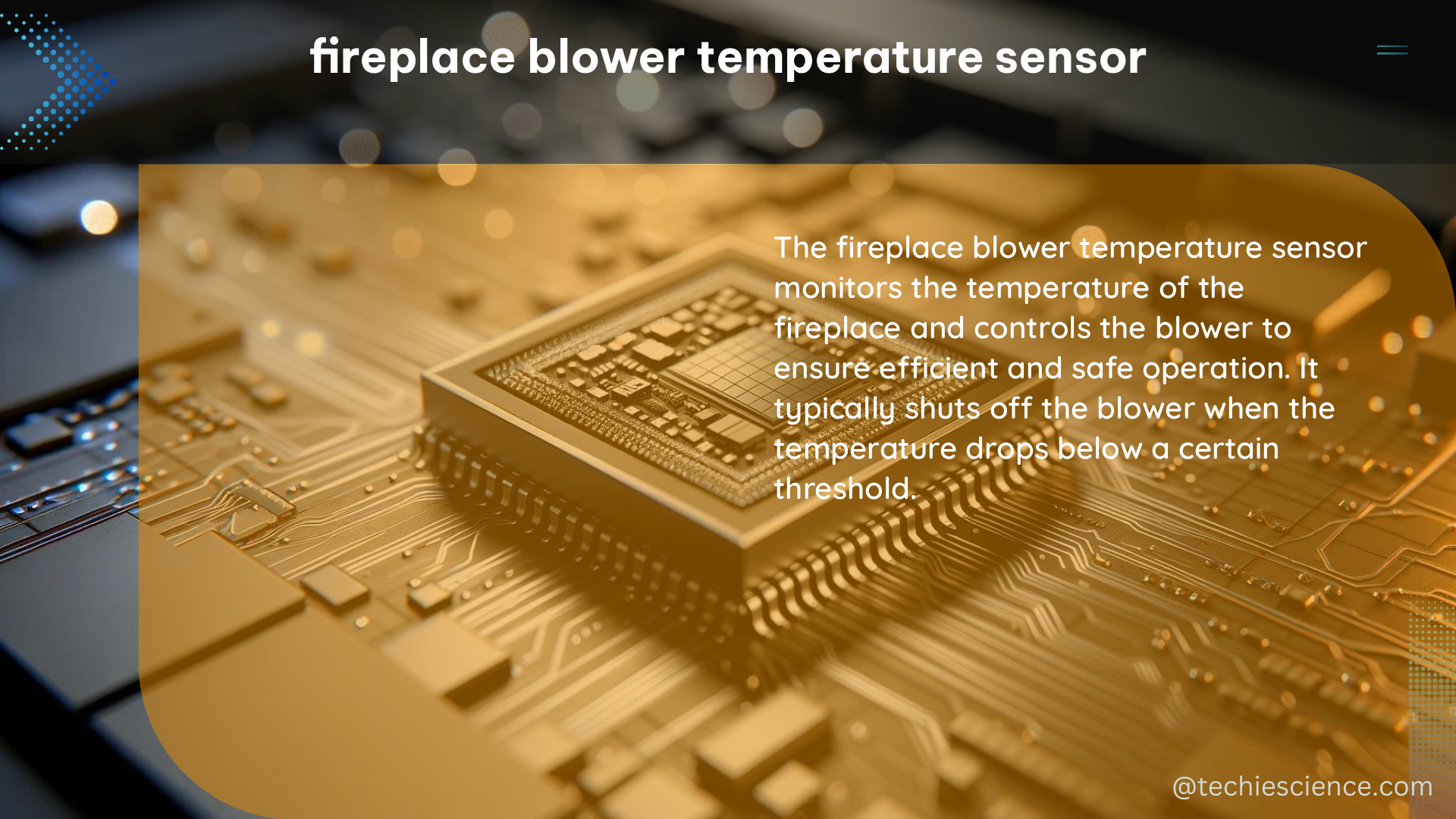The fireplace blower temperature sensor is a critical component in regulating the temperature of a fireplace and its surrounding area. It is designed to withstand high temperatures and ensure the blower operates only when necessary, maintaining a comfortable and safe environment for the occupants. This comprehensive guide will explore the various types of temperature sensors suitable for fireplace blower applications, their technical specifications, and the factors to consider when selecting the right sensor for your needs.
Understanding Fireplace Blower Temperature Sensors
Fireplace blower temperature sensors are responsible for monitoring the temperature within the fireplace cabinet and triggering the blower to activate when the temperature reaches a predetermined threshold. This ensures the efficient and safe operation of the fireplace, preventing overheating and potential fire hazards.
These sensors must be capable of withstanding the extreme temperatures encountered in a fireplace environment, which can range from ambient room temperature to well over 900°C (1,652°F) near the heat source. The sensor’s accuracy, stability, and response time are critical factors in ensuring the blower operates as intended, maintaining a comfortable and safe environment.
Types of Fireplace Blower Temperature Sensors

- MLX90614 Infrared Temperature Sensor:
- Measurement range: -40°C to 382°C (-40°F to 720°F)
- Accuracy: ±0.5°C (±0.9°F) in the range of 0°C to 50°C (32°F to 122°F)
- Non-contact temperature measurement
- Compact and easy to integrate into fireplace designs
-
Suitable for monitoring the temperature of the fireplace cabinet or surrounding areas
-
DS18B20 Temperature Sensor:
- Measurement range: -55°C to 125°C (-67°F to 257°F)
- Accuracy: ±0.5°C (±0.9°F) in the range of -10°C to 85°C (14°F to 185°F)
- Digital output for easy integration with microcontrollers
- Waterproof and corrosion-resistant design
-
Suitable for monitoring the temperature inside the fireplace cabinet or near the heat source
-
K-Type Thermocouple:
- Measurement range: -200°C to 1,372°C (-328°F to 2,502°F)
- Accuracy: ±1.5°C (±2.7°F) or 0.4% of the reading (whichever is greater)
- Robust and durable construction
- Capable of measuring extremely high temperatures near the heat source
-
Requires proper mounting and insulation to prevent damage
-
Fireplace Temperature Sensor Accessory Switch:
- Automatically turns on the blower when the fireplace cabinet reaches 120°F (49°C)
- Magnetic sensor that attaches to the metal cabinet above the equipment compartment
- Plug-and-play solution for easy installation
-
Ensures reliable temperature measurement and blower activation
-
NTC Thermistors:
- Measurement range: Typically -40°C to 300°C (-40°F to 572°F)
- Accuracy: ±0.1°C to ±0.5°C (±0.18°F to ±0.9°F)
- Highly accurate and stable temperature measurement
- Commonly used in life safety applications, making them suitable for fireplace blower temperature sensing
- Provide a large change in resistance per °C, ensuring rapid response to temperature changes
Factors to Consider when Selecting a Fireplace Blower Temperature Sensor
When choosing a temperature sensor for a fireplace blower, it is essential to consider the following factors:
-
Temperature Range: Ensure the sensor can measure the expected temperature range within the fireplace cabinet and surrounding areas, which can reach up to 900°C (1,652°F) near the heat source.
-
Accuracy and Stability: The sensor’s accuracy and stability are crucial for reliable temperature monitoring and blower control. Look for sensors with high accuracy, typically within ±0.5°C (±0.9°F) or better.
-
Response Time: The sensor’s response time should be fast enough to quickly detect temperature changes and trigger the blower accordingly, ensuring the fireplace operates safely and efficiently.
-
Durability and Resistance: The sensor must be able to withstand the high temperatures, vibrations, and potentially corrosive environments found in a fireplace setting.
-
Mounting and Integration: Consider the sensor’s physical size, mounting requirements, and ease of integration with the fireplace’s control system or microcontroller.
-
Power Requirements: Ensure the sensor’s power requirements are compatible with the fireplace’s electrical system and can be easily integrated.
-
Cost and Availability: Balance the sensor’s performance and features with the overall project budget and availability in the market.
By carefully evaluating these factors, you can select the most suitable fireplace blower temperature sensor for your specific application, ensuring optimal performance, safety, and energy efficiency.
Conclusion
The fireplace blower temperature sensor is a critical component in maintaining a comfortable and safe environment around a fireplace. This comprehensive guide has explored the various types of temperature sensors suitable for this application, including the MLX90614 Infrared Temperature Sensor, DS18B20 temperature sensor, K-type thermocouple, Fireplace Temperature Sensor Accessory Switch, and NTC thermistors.
When selecting a fireplace blower temperature sensor, it is essential to consider factors such as temperature range, accuracy, stability, response time, durability, mounting, integration, power requirements, and cost. By carefully evaluating these factors, you can ensure the optimal performance and safety of your fireplace system.
Remember, the selection of the right temperature sensor can make a significant difference in the overall efficiency, safety, and user experience of your fireplace. By following the guidelines and technical specifications provided in this guide, you can make an informed decision and ensure your fireplace blower operates as intended, providing warmth and comfort to your home.
References:
- Temperature Sensor for Fireplace
- Fireplace Blower Thermostat
- Temperature Sensors: Thermistors vs. Thermocouples
- MLX90614 Infrared Temperature Sensor Datasheet
- DS18B20 Temperature Sensor Datasheet
- K-Type Thermocouple Specifications
- Fireplace Temperature Sensor Accessory Switch
- NTC Thermistor Characteristics and Applications

The lambdageeks.com Core SME Team is a group of experienced subject matter experts from diverse scientific and technical fields including Physics, Chemistry, Technology,Electronics & Electrical Engineering, Automotive, Mechanical Engineering. Our team collaborates to create high-quality, well-researched articles on a wide range of science and technology topics for the lambdageeks.com website.
All Our Senior SME are having more than 7 Years of experience in the respective fields . They are either Working Industry Professionals or assocaited With different Universities. Refer Our Authors Page to get to know About our Core SMEs.